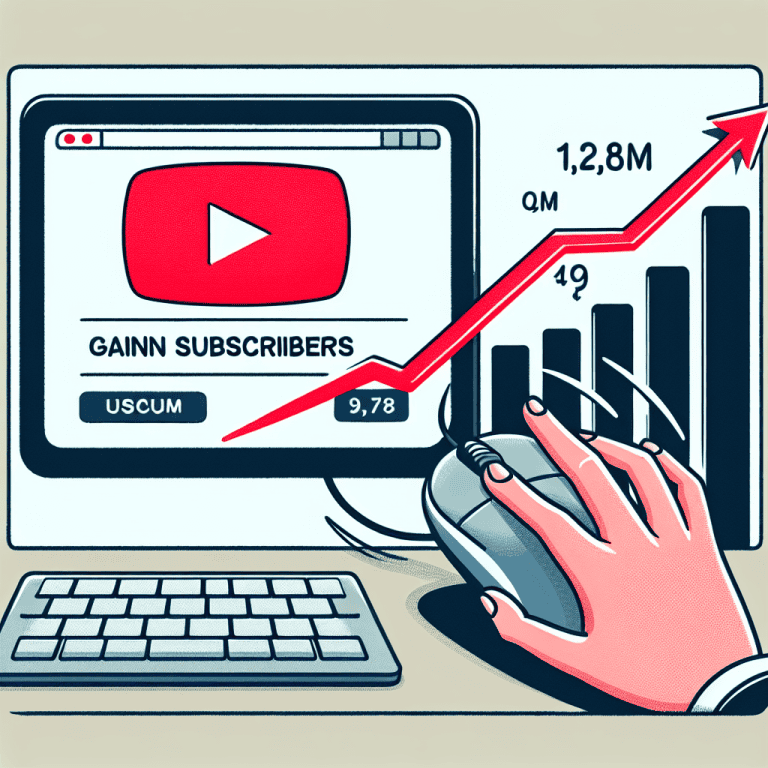Ultimate Youtube SEO Checklist: Boost Your Video Rankings in 2024
YouTube has become an essential platform for content creators, marketers, and businesses alike. With over 2 billion logged-in monthly users, the potential for reaching a vast audience is enormous. However, with such a massive user base, videos on Youtube face fierce competition. To stand out and get your videos noticed, you need to master YouTube Rankings with video SEO.
This comprehensive Youtube SEO Checklist will walk you through everything you need to know to optimize your YouTube video content and skyrocket your rankings in 2024.
Understanding YouTube SEO Checklist & Strategy

YouTube SEO (Search Engine Optimization) is the practice of optimizing your video content to rank higher in both YouTube search results and Google’s video search results.
Unlike traditional SEO, YouTube’s algorithm takes into account unique factors such as watch time, engagement, and audience retention.
Key factors that influence YouTube video rankings include:
- Keyword relevance (keyword research is a must)
- Watch time and audience retention (view in Youtube analytics)
- Engagement (likes, comments, shares)
- Video quality and production value
- Channel authority and consistency
By understanding these factors, you can create a strategy that aligns with YouTube’s algorithm and boosts your video visibility.
Keyword Research for a YouTube Channel
Effective keyword research is the foundation of successful YouTube SEO. Here’s how to find the right keywords for your videos:
- Use YouTube’s autocomplete feature: Start typing a keyword related to your video topic and see what suggestions YouTube provides.
- Analyze competitor videos: Look at the titles, descriptions, and tags of popular videos in your niche.
- Utilize keyword research tools: Tools like TubeBuddy, vidIQ, and Google Keyword Planner can provide valuable insights into search volume and competition.
- Focus on long-tail keywords: These are more specific phrases that often have less competition and higher conversion rates.
- Consider search intent: Understand what users are looking for when they search for a particular keyword.
Remember, the goal is to find keywords that have a good balance of search volume and competition level.
Optimizing Your Video Content
Creating high-quality, engaging content is crucial for YouTube SEO. Here are some tips to optimize your video content:
- Plan your content structure: Create an outline that includes an attention-grabbing introduction, clear main points, and a strong call-to-action.
- Focus on audience retention: Keep viewers engaged throughout the video by maintaining a good pace and providing value consistently.
- Use pattern interrupts: Incorporate visual changes, sound effects, or transitions to maintain viewer interest.
- Optimize for mobile viewing: Ensure your video is easily viewable on smaller screens, as mobile devices account for over 70% of YouTube watch time.
- Create playlists: Group related videos together to encourage longer watch sessions and improve overall channel performance.
By creating content that resonates with your audience and keeps them watching, you’ll signal to YouTube that your videos are valuable and worthy of higher rankings.
Create a Compelling Video Title and Video Description
Your Youtube video title and description play a crucial role in both SEO and click-through rates. Here’s how to optimize them:
Titles
- Include your target keyword: Place it as close to the beginning of the title as possible.
- Keep it concise: Aim for 60 characters or less to avoid truncation in search results.
- Use power words: Incorporate words like “ultimate,” “guide,” or “revealed” to increase click-through rates.
- Add the current year: This signals that your content is up-to-date.
Example: “Ultimate YouTube SEO Guide: Boost Your Rankings in 2024 [Expert Tips]”
Descriptions
- Front-load important information: Place your main keyword and key points in the first 100-150 characters.
- Provide value: Include a summary of what viewers will learn from your video.
- Use natural language: Incorporate variations of your target keyword throughout the description.
- Add timestamps: Help viewers navigate to specific sections of your video.
- Include a call-to-action: Encourage viewers to like, comment, and subscribe.
Remember to make your descriptions at least 200 words long to give YouTube’s algorithm more context about your video content.
Optimization of Video Thumbnails
Your thumbnail is often the first thing viewers see, making it crucial for click-through rates. Here’s how to create compelling thumbnails:
- Use high-contrast colors: Make your thumbnail stand out in search results.
- Include text overlays: Reinforce your video title with 3-5 words on the thumbnail.
- Show emotion: If featuring people, use expressive facial expressions to evoke curiosity.
- Maintain brand consistency: Use similar styles across your channel for recognition.
- A/B test your thumbnails: Use YouTube Studio to test different thumbnail designs and see which performs better.
According to a study by Tubics, videos with custom thumbnails receive up to 30% higher click-through rates than those with auto-generated thumbnails.
Youtube Video Tags and Categories
While Youtube tags may not carry as much weight as they once did, they still play a role in helping YouTube understand your content. Here’s how to use them effectively:
- Start with your target keyword: Use it as your first tag.
- Include variations: Add synonyms and related terms.
- Use both broad and specific tags: Balance general topics with niche-specific terms.
- Look at competitor tags: Use a browser extension like TubeBuddy to see what tags successful videos in your niche are using.
- Stay relevant: Only use tags that accurately describe your video content.
For categories, choose the most relevant option for your video. This helps YouTube recommend your content to viewers interested in similar topics.
Transcripts and Closed Captions
Adding transcripts and closed captions to your videos can significantly improve your SEO efforts:
- Improve accessibility: Make your content available to a wider audience, including those with hearing impairments.
- Boost watch time: Viewers often stay longer when captions are available.
- Enhance SEO: YouTube can crawl your captions, providing more context for your video content.
- Enable foreign language subtitles: Expand your potential audience globally.
To add captions:
- Use YouTube’s automatic captioning feature as a starting point
- Review and edit the auto-generated captions for accuracy
- Upload your own SRT file for more control over the caption content
According to a study by PLYMedia, videos with captions see an average of 40% more views than those without.
Engagement and Watch Time
Engagement signals and watch time are critical factors in YouTube’s ranking algorithm. Here’s how to improve these metrics:
- Encourage likes and comments: Ask viewers to engage with your content through clear calls-to-action.
- Respond to comments: Foster a sense of community by interacting with your audience.
- Create content that addresses viewer pain points: This naturally increases watch time and engagement.
- Use end screens and cards: Direct viewers to related content to keep them on your channel longer.
- Analyze audience retention graphs: Identify drop-off points in your videos and adjust your content strategy accordingly.
Remember, the goal is to create content that viewers find valuable and want to engage with naturally.
Channel Optimization
Optimizing your entire YouTube channel can boost the performance of individual videos. Here’s what to focus on:
- Create a compelling channel trailer: Showcase your best content and tell new visitors what your channel is about.
- Organize videos into playlists: Help viewers find related content easily.
- Use channel keywords: Include relevant keywords in your channel description and “About” section.
- Customize your channel art: Create visually appealing banner images that represent your brand.
- Maintain a consistent upload schedule: Regular uploads signal to YouTube that your channel is active and valuable.
- Software Tools for Youtubers: TubeBuddy OR VidIQ
Promotion and Distribution
To maximize the reach of your videos, consider these promotion strategies:
- Share on social media: Promote your videos across all your social platforms.
- Embed videos in blog posts: This can drive traffic from your website to your YouTube channel.
- Collaborate with other creators: Cross-promotion can help you reach new audiences.
- Engage in communities: Share your videos in relevant online forums and groups (where appropriate and allowed).
- Use email marketing: Notify your subscriber list when you release new videos.
Remember to tailor your promotional efforts to each platform for the best results.
Analytics and Performance Tracking
Regularly analyzing your video performance is crucial for refining your YouTube SEO strategy. Key metrics to track include:
- Watch time: Total minutes viewed across your videos
- Audience retention: How long viewers watch your videos on average
- Traffic sources: Where your views are coming from
- Click-through rate: Percentage of impressions that turn into views
- Engagement rates: Likes, comments, and shares per view
Use YouTube Studio’s analytics dashboard to access these metrics and identify areas for improvement.
Advanced YouTube SEO Techniques
To take your YouTube SEO to the next level, consider these advanced strategies:
- Create “hub” content: Develop a series of related videos that link to each other, encouraging longer watch sessions.
- Optimize for Google search: Some queries in Google trigger video results. Target these keywords to appear in both YouTube and Google search results.
- Use YouTube Shorts: Leverage this short-form video format to reach new audiences and drive traffic to your main channel.
- Implement schema markup: If embedding YouTube videos on your website, use schema markup to provide additional context to search engines.
- Leverage YouTube’s new features: Stay updated with YouTube’s latest features and algorithm changes to adapt your strategy accordingly.
By implementing these advanced techniques alongside the fundamental strategies outlined earlier, you’ll be well-positioned to outrank your competitors and achieve YouTube SEO success in 2024 and beyond.
Remember, this YouTube SEO Checklist is an ongoing process for your Youtube channel. Continuously test, analyze, and refine your approach and check out this blog post to learn more on how to become a successful Youtuber.






